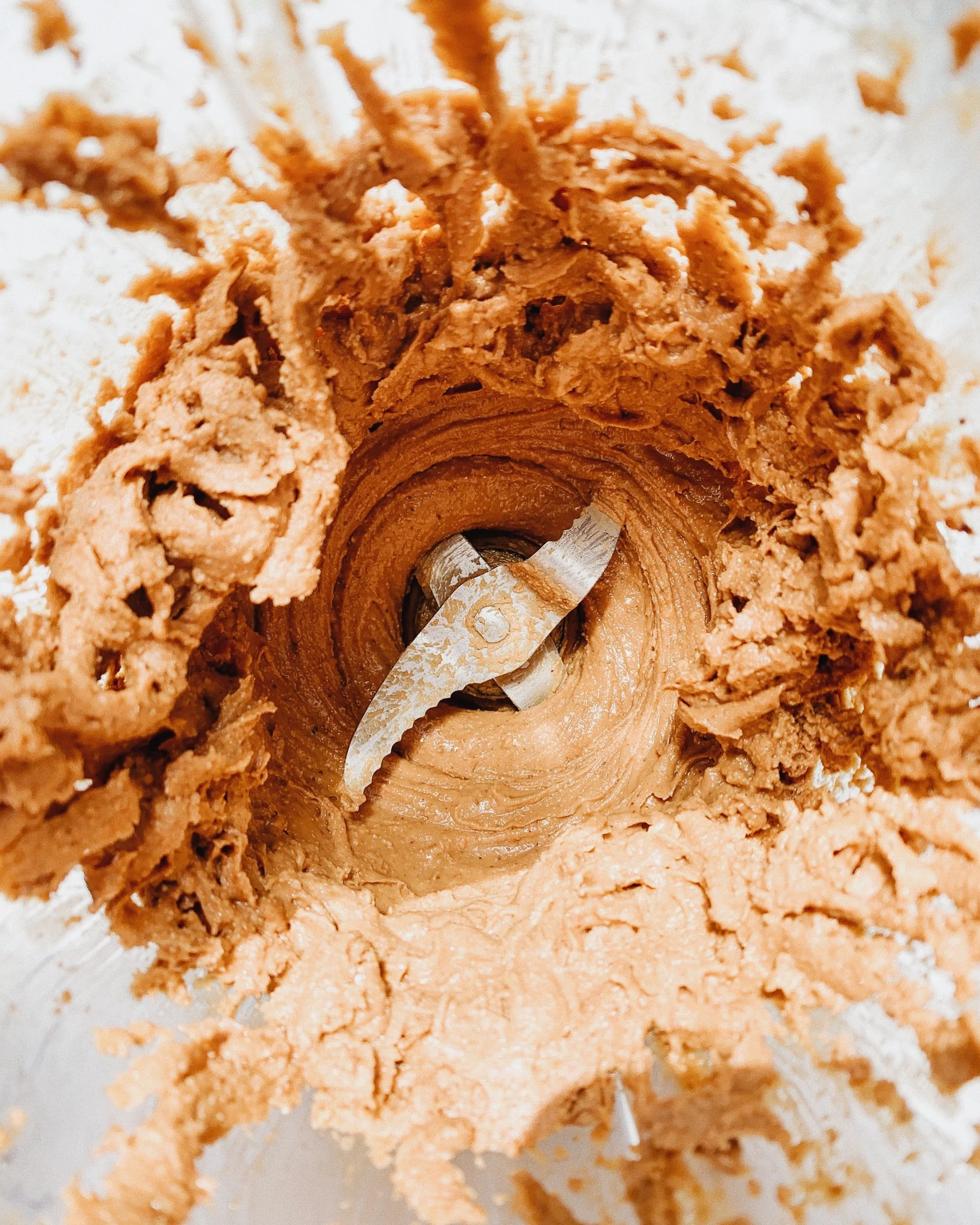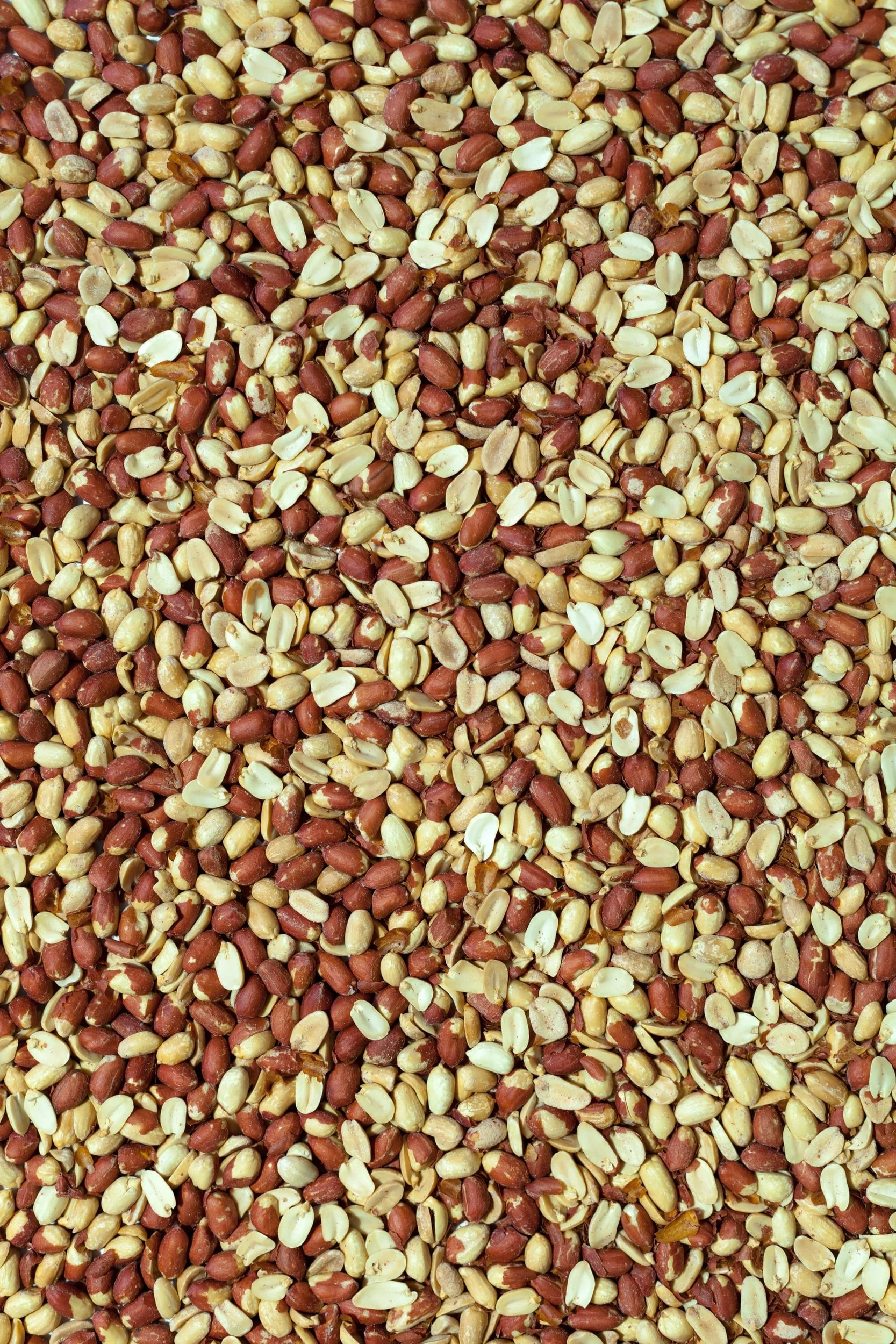Pantry Items: Make Your Own Peanut Butter
Over the past few years, we’ve been trying to buy in bulk as much as possible and make our own items. By making our own items such as oat milk, peanut butter, aioli, we can control what’s in the product, leaving you with the cleanest ingredients. I know we don’t all have the luxury of making all items from scratch all the time, but you can start small. Once you start, you’ll feel empowered to keep going. Before you know it, two years will have passed and you’ll be making your own pasta at dinner time!
Listed below are some items we started making at home, and loose recipes that we follow. I will be adding to this continually, so please be sure to check back.
I think it’s pretty clear that all peanut butter is not created equal. Most conventional peanut butters are made using hydrogenated oils and other ingredients that have been genetically engineered.
Artificial trans fats are produced when vegetable oils are subject to extreme temperatures or pressures to solidify the fat and increase shelf life, flavor stability and palatability (FDA 2013). These modifications benefit the manufacturer but are detrimental to the consumer's health. Health experts at the Institute of Medicine recommend "that trans fatty acid consumption be as low as possible" (IOM 2005). The CDC estimates that eliminating artificial trans fats could prevent up to 20,000 heart attacks and up to 7,000 deaths each year (Dietz 2012). In 2013, the FDA made a tentative determination that trans fats from partially hydrogenated oils (the primary dietary source) should no longer be generally recognized as safe (FDA 2013). Some trans fats do occur naturally in meat and dairy products. These natural trans fats may be of lower concern; some studies have found them to be beneficial, while others have found their effects to be neutral (Chardigny 2008; Mozaffarian 2009; Wang 2013).
Scientists have not determined whether GE food poses risks to human health. Still, consumers have many good reasons to avoid eating genetically engineered ingredients, including limited safety studies, the development of "superweeds" and increased pesticide use. For more information on the topic visit: http://www.ewg.org/research/shoppers-guide-to-avoiding-ge-food Note: The presence or absence of genetically engineered ingredients or ingredients derived from GE crops does not affect a product's overall score. [ewg.org]
Let’s take a look at some of the most popular peanut butter brands on the market. Click on the brand name to read the EWG report on each product.
Skippy Peanut Butter: Roasted Peanuts, Sugar, Hydrogenated Vegetable Oils [cottonseed, soybean and rapeseed oil] to prevent separation, Salt
*Note, Skippy does have a natural variety of their peanut butter, but natural doesn’t always equate to healthy — this variety still has the same amount of sugar in it. Peanut butter does not need sugar….
Jif Peanut Butter: Peanuts, Sugar, Contains 2% or less of: Molasses, Fully Hydrogenated Vegetable Oils [Rapeseed & Soybean], Mono and Diglycerides, Salt
Justin’s Peanut Butter: Dry Roasted Peanuts, Palm oil
Santa Cruz Peanut Butter: Organic Roasted Peanuts, Organic Palm Oil, Contains 1% of less of Salt
There are some delicious natural/organic peanut butter brands out there, but you’re going to pay a good chunk of change for the convenience of having someone else make your peanut butter for you. OR, you can purchase raw, unsalted peanuts in bulk and make your own — save your health, save a lot of money. All you need is a food processor and a little patience.
My recommendation for store bough peanut butter is MaraNatha. It’s organic, creamy with a deep rich flavor, and it contains two ingredients; Roasted Peanuts & Salt. We’ve been buying this for a while now, but decided to make our own to save some money and trips to the store.
DIY Peanut Butter:
I don’t make recipes for a living, so I don’t have exact times or amounts here, but let this be a guide for you to make this as you like.
The easy way: 2 cups peanuts = ~1 cup butter
Buy raw organic peanuts in bulk from the bulk section in your local grocery store or health food store.
Dump peanuts onto a cooking sheet and bake in the oven at 300 or so until they’re roasted. You don’t want them burnt, but you want them to have some color. The kitchen air will adopt the aroma of roasted peanuts hinting at their readiness.
Once the peanuts are done, set them aside to cool for a few minutes.
Add peanuts to the food processor (I use a 6 cup capacity Cuisinart)
Pulse peanuts about 10 times
Process on low until drops of oil are visible, about 5 minutes or so
Depending on the consistency you want it, continue processing, scraping the bowl down occasionally
Once desired consistency is desired, add kosher or pink Himalayan sea salt to taste
Pulse 2-3 times to mix in the salt and adjust salt until desired taste is achieved
Scrape into mason jar with a rubber spatula, label and store!
The hard way:
Put your nuts or seeds into a large bowl
Cover the nuts or seeds with a mixture of 1-2 tablespoons sea salt per 1 quart of water. It is suggested that salt helps activate enzymes that help to break down phytate. But I was unable to find any study supporting this claim.
Soak the nuts or seeds for 7 hours or overnight
Rinse the nuts or seeds well in a strainer or colander
Dry well—a half day to a full day in a dehydrator (like this one) or in an oven set to no higher than 150 degrees Fahrenheit
Once dry, start the steps above under “The easy way”
Soaking your nuts, seeds & grains removed some of the phytic acid naturally found in these food items. Consumption of large quantities of phytic acid can pull vitamins and minerals from the body, leaving you depleted! Read more about this here: https://www.healthyandnaturalworld.com/why-you-need-to-soak-nuts-and-seeds/
Enjoy your fresh AF peanut butter :)


